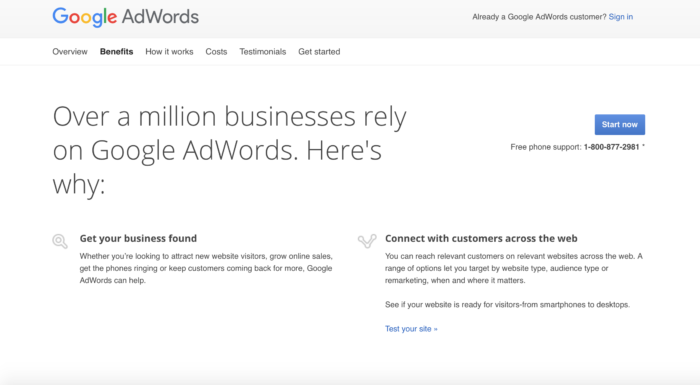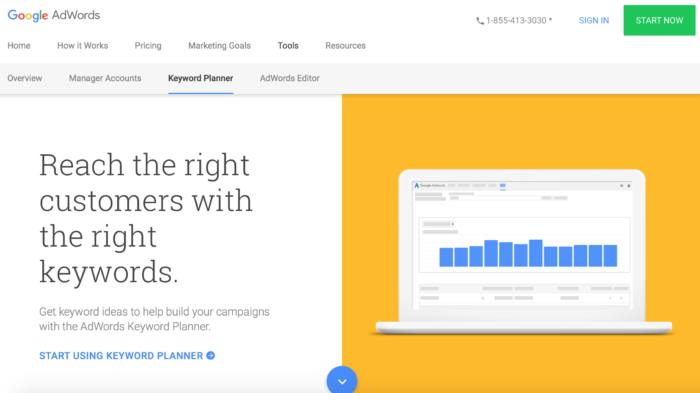Keywords are a huge part of how your content is found online. Learning effective keyword research strategies will dictate whether or not your business can be found online .
Let’s say you’ve created the perfect blog with all the right content and relevancy for your desired audience, but you’re not getting any traction. Before junking the whole thing and deciding its just not right for you, take a second to determine whether or not you used the right keywords.
The Complete Guide to Keyword Research
Many blogs take a wrong turn when they don’t focus on their keyword research. Without keyword research, your posts will be hard to find or found by the wrong audience. Taking some time to develop the right keywords for your posts will make you easier to find and by your target audience.
https://youtu.be/NC6fi55dVgc
Maybe you already have a keyword research list but it’s not working out for you. Maybe you’ve never thought about having any and are now stressed at the prospect of trying to come up with some.
First, make a list of keywords, then begin the process of judging and eliminating them until you have the perfect ones for your brand.
How to Judge the Value of a Keyword
When judging the value of a keyword research, it is important to understand how our own websites use the classic web marketing formula of hypotheses, test, and repeat.
1. Ask yourself if the keyword is relevant to your website’s content
- Can searchers find what they’re looking for on your site with these keywords?
- Will they be happy with what they find?
- Will this kind of traffic result in financial rewards?
2. Search for the keyword yourself in major search engines
- Finding out what websites already rank high with your keyword will give you a good idea of what your competition is and how hard it will be for you to rank for this term.
- Look for ads running along the top of the page. Lots of ads usually mean it’s a high-value keyword, which will bring in a lot of searchers.
3. Use Google AdWords to check out test traffic
- Choose ‘exact match’ and point traffic to a relevant page on your website. You can then track impressions and conversion rates of at least 200-300 clicks.
4. Using the data you collected, determine the value of your keyword
- Determine how many impressions your page made a day, how many came to your site, and how many have been converted for a profit.
- These numbers will tell you how well your keyword is working for you.
The Value of a Target Model
The idea behind a target model is that different keywords will create different levels of interest and intent with your audience. Consequently, some words are used by people in their initial search and others are when people are close to a conversion.

Your desired conversion rate is the center of your target. Your keywords are categorized by how well they convert. You’ll want to invest time and money in the keywords that show up closest to your target’s center.
1. Brand Terms
- These people already are familiar with your brand and are the easiest to convert.
- This category may not have the most volume of visitors, but it will have the highest conversion rate.
2. Product Terms
- This is the basics of your product: what it is, what it does, and what problem it solves.
- Your cost per action (CPA) will be higher on these words because these visitors are farther back in the decision cycle.
3. Competitor Terms
- These are good to research if you have extra funds and a strong competitor you’re up against.
4. Audience Terms
- These are all the other kinds of terms that your audience may be searching for.
- The impression volume of these words can be large, making it a tempting category.
- This category may also give you a lot of suggestions from higher-ups about trying these types of keywords.
SEE ALSO: Content Planning Tips To Compete with Big Brands
Use a Target Model in Your Keyword Research
It’s about matching the language on your site to the language that your customers use when they search for you.
Once you know how to use a target model, how do you start one of your own?
Create your seed list
Your seed list is your list of keyword ideas. Write down the keyword categories and begin brainstorming and researching.
1. Research your audience
- Find out what terms your audience uses when describing similar products.
- Look at blog posts, forums, comments, and Linkedin groups to find this information.
- Create a ‘buyer persona’ to help you narrow down who your audience is. This will include gender, age, income, hobbies, struggles, and goals. You can have more than one buyer persona depending on your industry, but remember to be specific.
2. Look at the search terms in use right now
- Use Google Webmaster tools and weblogs to see what terms people are already using to search for you.
3. Get suggestions 
- Soovle is a great option to use to see what people are searching for. Type in a word and get a list of autocompletes from major search engines
4. Scope out the competition
- Use sites like SEMrush or SpyFu to avoid spending hours on the internet to see what competitors are bidding on. Just type in a few competitor’s names or key terms to see if you’ve missed anything.
Remember that it’s great to use keywords that get 5,000 searches a day, but they are only about 30% of searches performed on the internet. The other 70% are found in hundreds of millions of unique searches that may be done a few times a day but account for the majority of search volume.
These keywords often have better conversion rates too because they catch people closer to the center of the target. They know exactly what they’re looking for.
Build your keyword research list
Using a keyword research tool like Google Adwords Keyword Planner you can start expanding your keyword list. Other tools include Moz Keyword Explorer, Google Trends, Microsoft Bing Ads Intelligence, and Wordtracker’s Free Basic Keyword Demand.

When searching, it is important to group your words by topic. Search multiple things at once, but make sure that they are related. If you sell shoes and socks, search for ‘shoes’ and ‘high-heeled shoes’ at the same time, but search socks separately.
When selecting your ‘match types’ be sure to click ‘exact’. This will give you a much clearer picture of the kind of traffic you will be getting with your specific keyword.
You will also want to go over your advanced options and filters in order to select your language and location. You can get really specific here like only Chinese speakers in Boston if you want to, but remember that the number you see in Local Monthly Searches will be a reflection on the searches from people matching your criteria.
At this point, you can set up your columns, particularly Competition and Local Monthly Searches columns. These will be your most useful columns for keyword data for your site.
Now you can check off the keywords you want to use and select My Keyword Ideas. This will create a spreadsheet of your results. Your keyword ideas will stay in the left column and you can download them after you’re finished.
Refine your keyword research list
Once you have a list of keywords, you’ll want to narrow them down to the best ones that are specific to you. Basically, you’ll just want to eliminate the less interesting words on your list.

1. Keyword Category
- If you have many more keywords than keyword categories, then you should eliminate the ones farthest from the center of your target model.
- Stick to terms that can be found in ‘product terms’ rather than ‘audience terms’
2. Competition
- Sites like Google and Moz can rate keyword competition for you from low to high.
- Find the right words that you have a better chance of ‘winning’ with over your competition.
3. Search Landscape
- You can do a little research of your own at this point. Search some of your main keywords into big search engines and see what comes up.
- You can also make a list of keywords you don’t want to come up for, anything with a potentially negative meaning that could detract from your brand statement.
4. Semantic Grouping
- Find the keyword that all have something similar and group them together.
- If you find a group with a large number of words, this is a great opportunity to drop the ones with a lower search count.
Final Thoughts
There is a clear science behind the use of keywords in your posts and how they can help your website reach a larger audience.
Using sites like Google AdWords and Soovle can give you ideas behind which keywords are working and what people are searching for. Use this information to your advantage and add them to your site to make it easier to find, and found more often by the audience that you’re looking for.
What should you prioritize: Keywords or content? I would love to know your thoughts in the comment section…










